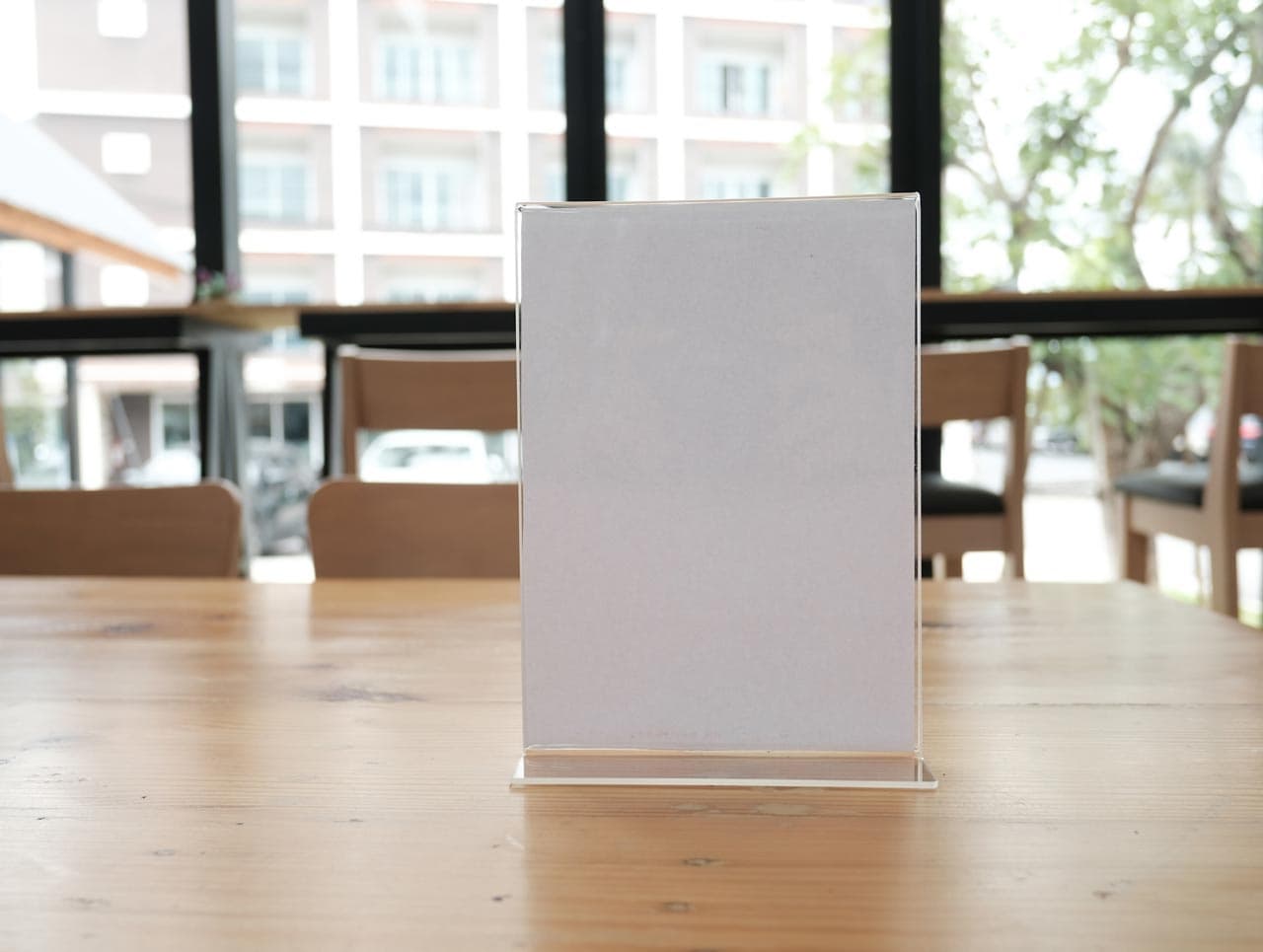Acrylic sign holders are transparent and sturdy plastics that can serve versatile purposes in place of glass, wood, and metal, for years, if properly cared for. Maintaining the finish and shape of acrylic displays and knowing how to fix cracks on them can also help you save on your budget because you don't have to keep on replacing them.
To help you handle them with care, below are some helpful tips.
How Do You Clean Acrylic Holders?
Use lukewarm water and a soft, non-abrasive microfiber cloth when cleaning acrylic brochure holders.
You can add soap to the mix but it's best if you use the liquid form. If you plan to use detergent powder, make sure to dissolve all the particles in water before applying. Undissolved particles can end up scratching the surface of the acrylic, leaving unwanted, visible marks.
Gently blot the surface and use small circular motions to get rid of any stain or sticky dirt.
What Should You Not Use When Cleaning Acrylic Panels and Holders?
Do not:
- Use scouring pads or abrasive cloths to keep the surface from getting scratched.
- Use cleaners with harsh chemicals or ammonia as they tarnish the shiny or matte finish of acrylic.
- Wax your acrylic sign holders as it can ruin their shine.
- Wipe your acrylic displays with paper towels or disposable wipes because they may contain abrasive fibers that can destroy their shiny or matte finish.
How Do You Keep Acrylic Dust Free?
To be safe, regularly dust your acrylic brochure holders and panels with a fresh, soft cloth. Dirt patches and fine abrasive particles on used or unwashed fabric can destroy your acrylic displays if you're not careful.
Your best bet is an electrostatic wipe or cloth. It is made to collect dust without launching it into the air. Your displays will be cleaned and shined, and the indoor air quality will be improved as well.
The frequency of dusting acrylic holders is determined by your surroundings. If you regularly maintain your air filters in conditioners, you can dust every two weeks. If otherwise or if your office is exposed to busy traffic and other environmental factors, you must dust your acrylic displays every two days.
Should You Use a Feather Duster to Dust Your Acrylic Frames?
While a feather duster comes as an easy trick to get rid of dust from surfaces, most of the time, it only scatters the particles into the air. It can even leave fluffs in unexpected places.
To keep all surfaces and the indoor air free of allergy-triggering fragments, use a lint-free microfiber cloth when dusting acrylic holders.
How Do You Get Rid of the Static Charge on Acrylic Surfaces?
Acrylic is a good conductor of static electricity. The charge can attract dust and other debris. This can make cleaning tiring and installing the panels, frames, or holders difficult.
To neutralize the static charge, use an anti-static spray. Spray it on a clean microfiber cloth and wipe it on the surfaces in a circular motion as if you're polishing them. Ambersil is a commonly used brand for this purpose.
How Do You Store Acrylic Displays and Holders?
The key to prolonging the lifespan of acrylic panels and holders is through regular cleaning and proper storage. We've talked about how these versatile should be maintained, so now here are some tips when storing them:
Keep Your Acrylic Holders Away from Heat or Direct Sunlight
Do not place anything hot directly on the surfaces of your acrylic products. Do not store them anywhere with heightened temperature either. Acrylic is a thermoplastic and extreme heat of more than 100 degrees Fahrenheit or 38 degrees Celsius can cause it to melt, warp, and discolor.
Use Protective Film if You're Storing Acrylic Sign Holders for a Long Time
Acrylic is plastic which means it can easily be scratched. If you intend to put your holders away for a long time, wrap them in a protective film or sheet. This is usually a thin plastic wrap frequently used in the kitchen. Then, store them where they won't easily be scraped.
2 Best Ways To Protect Your Acrylic Holders
Fixing and protecting acrylic sign holders from damage requires the use of special products. Here are the most recommended by plastic experts:
Apply Acrylic Polish on Scratches
Cost-effective and specially formulated chemical treatments like Novus and VuPlex are highly recommended when polishing and protecting acrylic frames. They are made to fix deep scratches and get rid of patches and are effective for removing adhesives or glues from previous displays.
Use Silicone Sealant On Small Cracks
Use a silicone sealant to fix minor cracks in an acrylic display. If it's deep and on the surface, apply the sealant directly. Some cracks may be beneath the surface. Seal them by drilling a hole into the side of the acrylic sheet. and applying the silicone through it.
A silicone sealant will aid in the structural integrity of the acrylic, but only if the cracks are minimal. It is best to replace the acrylic panel with a new one if it has cracked across a considerable area of the product.
Opt for Acrylic Display Holders that Last
As you can see, maintaining acrylic plastic products is fairly easy and does not demand too much work. Frames, panels, brochures, and sign holders can last years in their best shape and appearance if properly cared for.
When cleaning acrylic brochure holders, the rule is to be as gentle as possible. Scratches can be avoided by using electrostatic microfiber cloths, which also prevent dust from accumulating on the surfaces. Use cleaning solutions that are specifically designed for the acrylic to avoid damage to the surface or finish of the material.
Of course, all the cleaning and proper storage will go to waste if you use products of poor quality. Displays&Holders have worked with established and trusted businesses in showcasing their marketing and promotional efforts in high-quality customized holders and frames. Check out our catalog!
For acrylic care inquiries and bulk orders, reach out to our customer service via phone, live chat, or email.













